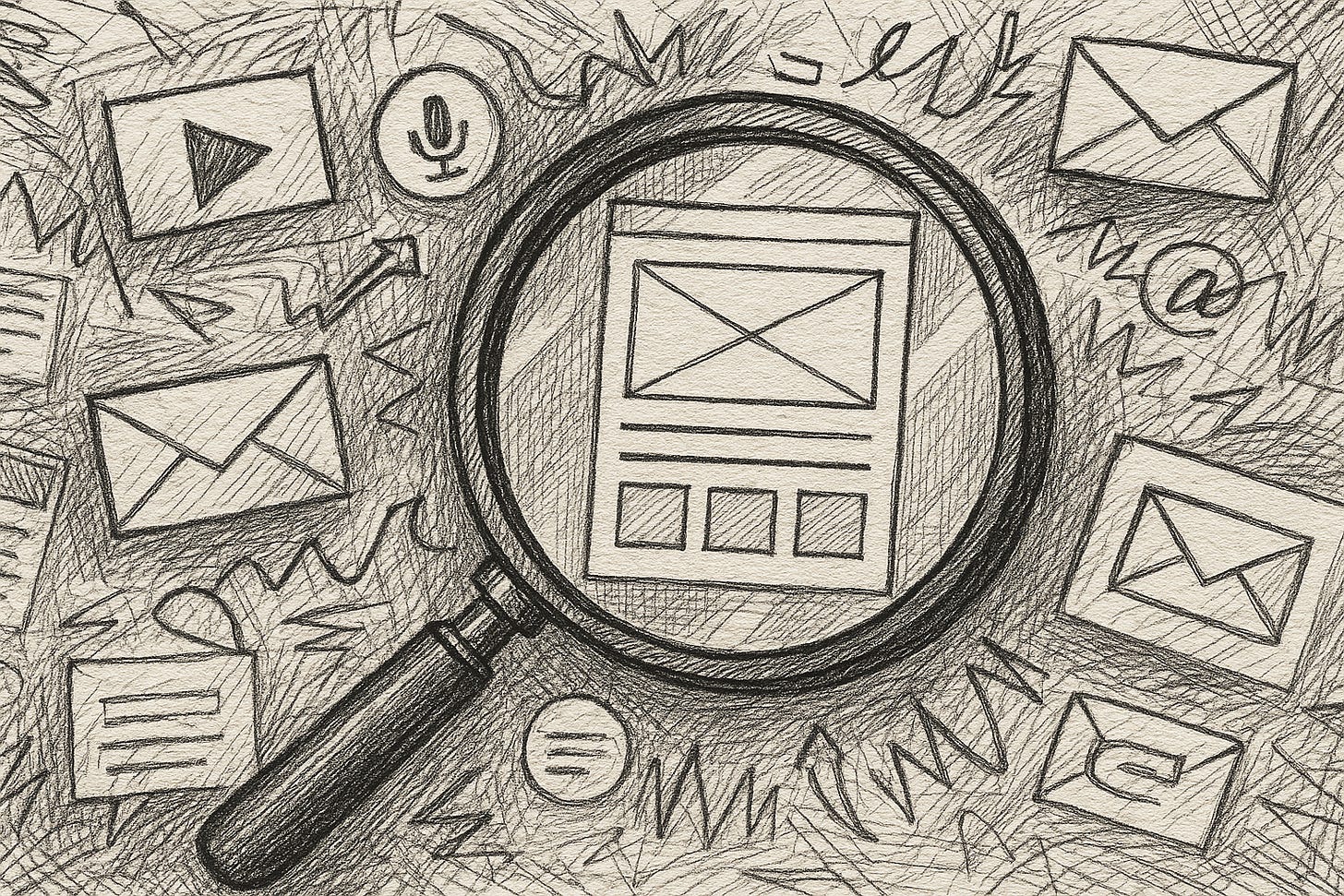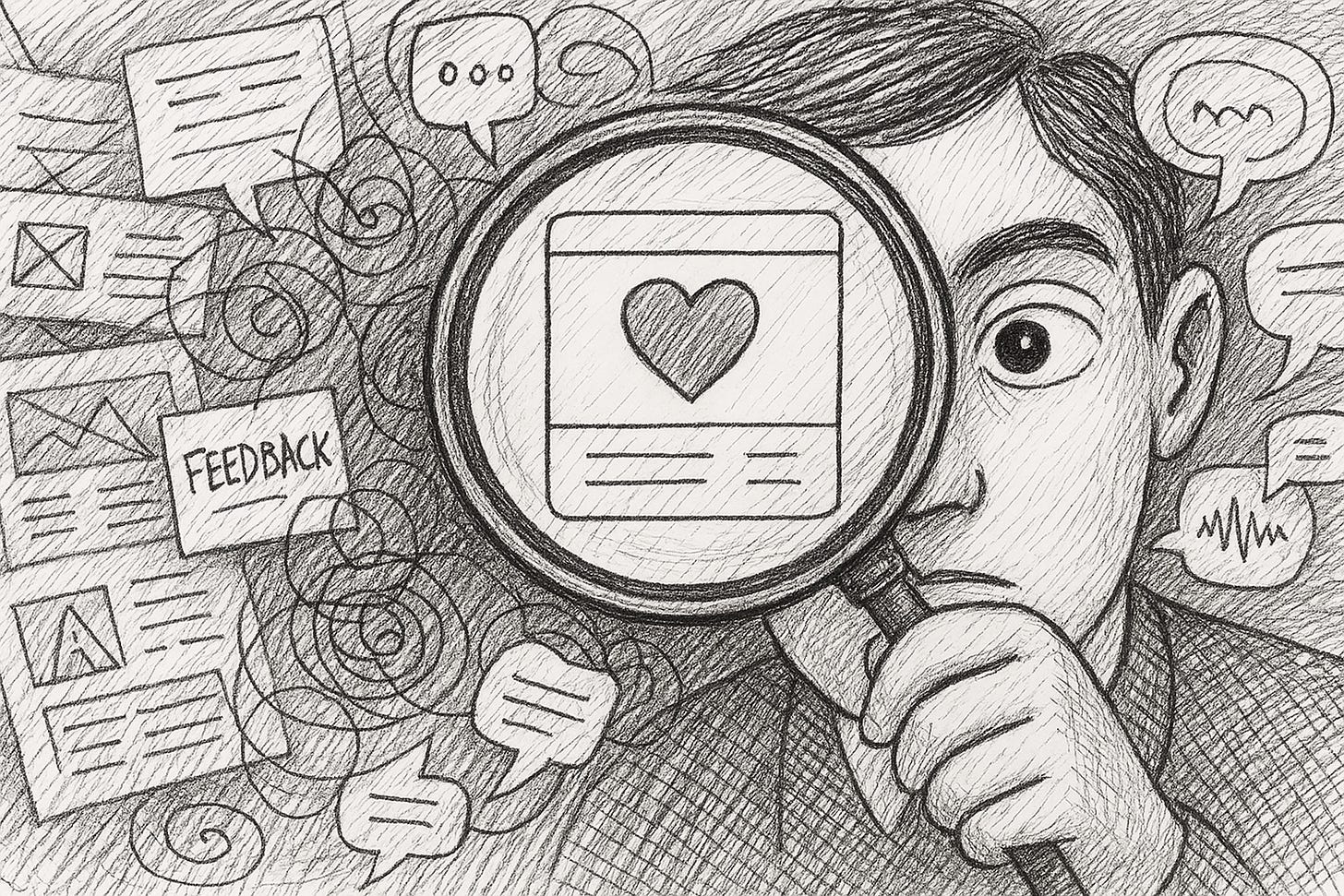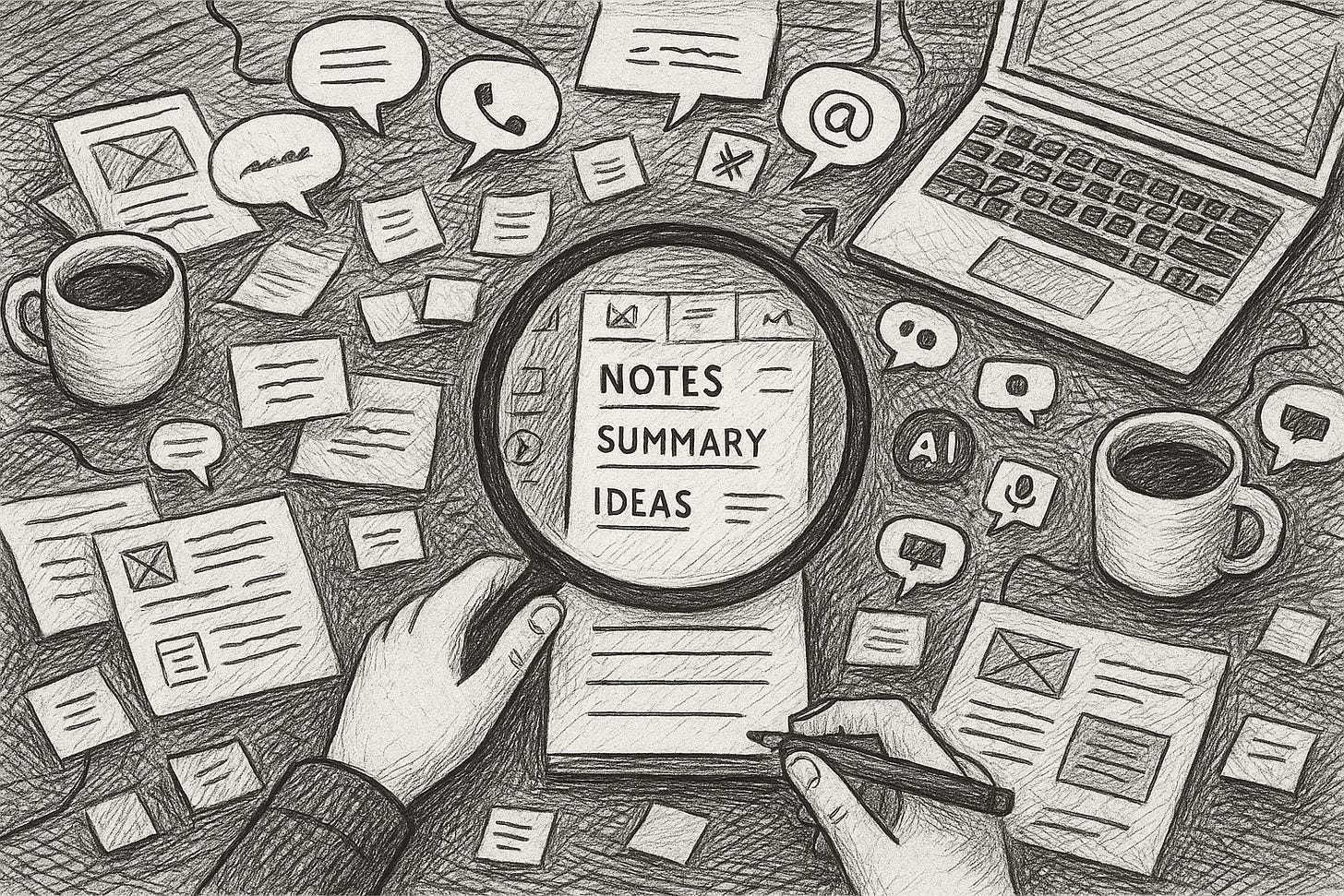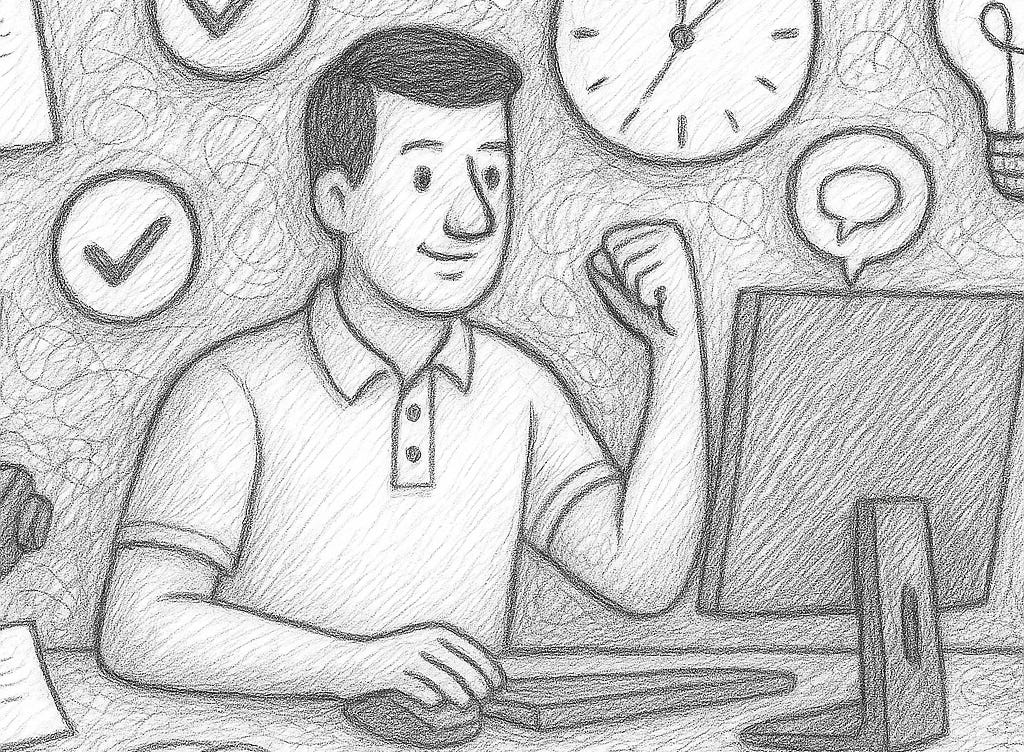Attention: The Creative Superpower You Probably Forgot You Had
Why intentional focus is your secret weapon for better work and happier teams
Let’s be real: most of us start our workdays with grand intentions—today, I’ll really listen in those meetings. I’ll be sharp, tuned in, a regular attention Jedi. Fast-forward a few hours, and you’re fighting off the urge to check your phone for the twentieth time as the conversation veers off into the land of “Action Items That Will Never Happen.”
If you work in UX, product, development, or business, you know the drill. The calendar’s packed. The meetings are endless. There’s always someone asking, “Did you catch that?” when, if you’re honest, you maybe caught half and are faking the rest. (No shame—happens to the best of us.)
But here’s what nobody tells you: intentional attention is a creative superpower. It’s not about being born with photographic memory or the ability to resist Slack notifications. It’s about treating attention like a skill—a muscle you build on purpose, especially when everything around you is designed to break your focus.
Attention to Detail—and Beyond
“Attention to detail” is every designer’s favorite phrase on LinkedIn, right? But for a UX designer—or anyone who works with a product team—real attention goes beyond lining up buttons or making sure your color palette matches.
It’s about seeing through the noise. Tuning in to what matters: what people are really saying, what isn’t said out loud, and what’s buried in that feedback nobody wants to read. This isn’t just about getting your details right—it’s about making sense of chaos and finding clarity where others find clutter.
1. Navigating Meetings Without Losing Your Mind
Meetings with a crowd of stakeholders often go off-script. Product wants speed, developers want sanity, and the business side… well, let’s just say they want it all.
Intentional attention means listening for the themes that keep popping up, spotting the throwaway comments that actually reveal real issues, and asking questions when something feels fuzzy.
Example: Someone mentions onboarding is “confusing.” Most will suggest a new tooltip. You might realize the emails sent after sign-up are the real problem, not the UI. That’s attention beyond the obvious.
2. Actually Understanding Stakeholder Perspectives
People talk a lot in meetings. What matters is figuring out why they’re saying what they’re saying. Product managers push for fast releases? Maybe there’s an investor deadline you didn’t know about. Developers resist new features? There’s probably tech debt or an overstuffed backlog in play.
Example: A developer sighs at your new feature idea. Attentive listening uncovers that the last release broke three things, so now they’re (understandably) gun-shy. Now you can adapt, not just argue.
3. Receiving and Digesting Feedback (Without Having an Existential Crisis)
Reading feedback can feel like a never-ending episode of “Nailed It!” But real attention means you don’t just take complaints at face value. You look for the patterns, the causes beneath the symptoms, and dig until you know what’s actually broken.
Example: Users say a dashboard is “busy.” You could just delete a few charts. Or, you could notice they’re all trying to find the same metric buried deep in the data. Now, you’re solving the right problem.
How to Actually Pay Attention (Yes, Even in Meetings)
You don’t need a meditation app or fancy productivity hacks. Here’s a cheat sheet you can start using now:
1. Take Personal Notes
Even if there’s a note-taker, jot your own thoughts. You’ll remember more and spot your own action items—not just what the group captured.
Example: You write down your burning questions during a kickoff call and actually remember to ask them later. Instant clarity upgrade.
2. Summarize Right After
Before you jump to the next thing, jot a three-line summary of what just happened. What stood out? What’s next?
Example: After a heated stakeholder review, you note the three real objections that matter (not the ten side comments about color choices). You can move forward, not in circles.
3. Customize Your AI Prompts
If you summarize your meetings with an AI—which you should, by the way—remember: AI can’t read your mind (yet). Give it context by mentioning the topics covered, who was in the meeting, and what details you actually care about.
Example: Don’t just ask for “meeting notes.” Instead, try “Summarize what the product team said about onboarding for new users.” Much more useful.
4. Share and Double-Check
Share your recap with the team—ideally shortly after the call—and ask: “Did I miss anything?” Let others fill in the blanks and make sure you’re all aligned.
Example: You post your notes in the group chat, and someone chimes in with a missing detail that changes the plan. Better now than later.
Building Your Attention Muscle (No Gym Required)
Let’s take a look at a few practical, research-backed habits you can use to make intentional attention your new normal:
1. Practice Mindful Engagement
Resist the urge to multitask in meetings. Yes, it’s hard. No, you’re not a robot. But making the effort pays off: A Stanford study found that people who multitasked during cognitive tasks performed worse and remembered less than those who focused on one thing at a time (read the study). Even trying to be more present can make a difference.
Example: You close Slack during your 1:1s and finally catch that subtle hint your manager keeps dropping.
2. Structured Notes FTW
Pick a system. Use bullet points, mind maps, whatever works. Consistent note-taking doesn’t just help you remember more—it helps teams work better, too. In fact, research published in the Journal of Educational Psychology found that organized note-takers retained and recalled up to 34% more information than those who didn’t follow a structure (read the study).
Example: After sprint planning, your notes show the same issue keeps coming up. Now, you flag it early—before it derails everything.
3. Reflect, Don’t Just Move On
According to research from Harvard Business School, just 15 minutes of end-of-day reflection can boost your performance by 23% in less than two weeks (read more here). Take a moment at the end of your week to skim your notes and ask: What did you miss? Where did you nail it? What’s still fuzzy?
Example: You notice the same feedback comes up every retro. Maybe it’s time to actually fix it?
4. Take Breaks, Seriously
A five-minute walk between meetings does more for your brain than a new productivity app ever will. Research from Microsoft's Human Factors Lab found that short breaks between meetings reduce stress and improve focus by allowing the brain to reset (Microsoft WorkLab).
Example: Instead of doom-scrolling, you grab a coffee and come back ready to focus—no meditation retreat required.
Key Things to Remember
Here’s what matters most:
Attention isn’t just a checkbox for UX designers, product folks, or developers—it’s what makes the work actually work.
Small changes in how you listen, take notes, or reflect will add up quickly.
Soon enough, you’ll find you’re not just surviving endless meetings; you’re actually steering the conversation.
Practice intentional attention. The universe may not reward hope, but it does reward focus—and maybe, just maybe, you’ll finally leave a meeting actually knowing what happened.
So go on—give your full attention a real shot. Start small, keep at it, and watch how much more confident (and creative) you become, both in meetings and in your work. Your future self—and your teammates—will thank you for it.





